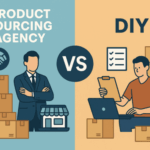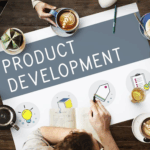When it comes to procurement and supplies operations within an organization, something as fundamental as choosing the right sourcing model dramatically affects the business’s performance in terms of cost and risks. Two commonly used strategic categories of supply are single-sourcing and multiple-sourcing.
Each one of them is characterized by certain opportunities and risks that affect corporate business performance and market competitiveness. This article will discuss sourcing strategies with reference to current trends and statistics to assist the reader with practical recommendations.
What is Single Sourcing?
Single Sourcing is a procurement strategy in which an organization undertakes to obtain specific products or specific services from one supplier. This model depicts a strong bond between the supplier and the wire and is used when product specification and quality standards are critical.
Advantages of Single Sourcing
- Enhanced Supplier Relationships: Developing a good and sustainable partnership with one supplier results in a better corporation, smooth cooperation, and unique services.
- Cost Savings: The single or once supplier-based procurement that is part of this process creates administrative and Logistical costs.
- Consistent Quality: In the case of customized products, it will also be less complicated to maintain product quality if a business has a single supplier.
- Volume Discounts: Purchasing from one supplier helps an organization in that bulk orders enable it to get better deals and quantity discounts.
Challenges of Single Sourcing
- Risk Dependency: Relying on one supplier can lead to supplier change destruction in case of supplier failure or unforeseen issues.
- Limited Innovation: sticking to one supplier mainly restricts the business from accessing innovative ideas or exploring cost-competitive alternatives.
What is Multiple Sourcing?
Multiple Sourcing, in contrast, involves Sourcing products or services from various suppliers. This strategy aids in promoting competition and diversified risk and provides a broader range of options.
Advantages of Multiple Sourcing
- Risk Mitigation: Multiple suppliers reduce the chances of description from any single source.
- Competitive Pricing: Involving several suppliers encourages competition and offers the best pricing and terms.
- Access to Innovation: Companies can take advantage of expertise and creative ideas offered by various suppliers instead of relying on a single vendor.
- Flexibility: Involving multiple suppliers allows the organization to be more flexible to changes in demand or supply.
Challenges of Multiple Sourcing
- Complex Management: Managing healthy relationships, dealing with contracts, and logistics support with multiple suppliers at a time required more resources and team coordination.
- Higher Costs: The logistical challenge and administrative burden absurges the cost as compared to the single Sourcing.
Single Sourcing vs. Multiple Sourcing: Recent Trends
- Rising Supply Chain Risks: According to the latest Survey by the International Procurement Association, approximately 63% of companies faced supply destruction in the last 2 years. This led to the conversion of numerous businesses to multiple sourcing to ensure continuity.
- Cost Effectiveness: A survey by the procurement leader network identified that companies adopting multiple sourcing strategies were able to reduce the procurement caused by 18% as compared to single sourcing.
- Sustainability Focus: Businesses opting for environment-friendly practices prefer multiple Sourcing to work with suppliers that meet sustainability criteria.
When Should Businesses Choose Single Sourcing?
Single Sourcing is particularly effective in specific scenarios; it’s not a one-size-fits-all strategy.
-
High-Quality Requirements: Companies like Aerospace pharmaceuticals and luxury goods often opt for single sourcing to maintain strict quality control.
-
Customized Products: Single suppliers are a better choice when goods require customized significance, and they foster better alignment, too.
-
Simplified Logistics: Small companies can go for one supplier as it reduces the complexity of procurement operations.
-
Trust and Collaboration: Single Sourcing is a perfect choice when both buyers in supply seek a long-term relationship and collaboration.
Case Example
Take the example of a leading Automotive manufacturer for reducing his production delays by 20% after hiring a trusted single supplier for Sourcing critical engine components.
When to Opt for Multiple Sourcing?
Multiple Sourcing is an ideal fit for an organization that prefers flexibility, risk management, and Price efficiency.
-
Risk Diversification: Numerous Industries can benefit from multiple suppliers that mitigate the risk of sudden destruction.
-
Dynamic Markets: Businesses working in a rapidly changing environment can go for diverse suppliers to adapt to market demands.
-
Innovation Access: Working with multiple suppliers at a time to stay ahead when it comes to innovation and tapping into various expertise.
-
Cost Efficiency: Competition due to multiple Sourcing among the suppliers can produce the cost and the company can secure favorable terms.
Case Example
Global retail chains successfully reduced the supply shortage during the pandemic by relying on multiple Sourcing Strategies for their significant product lines like electronics and clothing.
Technology’s Role in Sourcing Strategies
Digital tools have revolutionized the procurement approach. Whether you are obtained for single sourcing vs multiple sourcing Technology assesses the companies to align the processes, monitor the supplier performances, and reduce the cost.
Key Technologies in Procurement
-
Supplier Relationship Management (SRM) Software: This software helps in tracking and optimizing the supplier relationship.
- Artificial Intelligence (AI): This aids in predictive analysis of supply chain risk and demand forecasting.
- Blockchain: This software improves transparency and accountability in the trip supplier transactions.
Recent Statistic
The study revealed that 82% of companies adopting AI-driving procurement tools reported a 30% decrease in administrative overhead.
The Hybrid Approach: Best of Both Worlds
Numerous companies these days are adopting hybrid Sourcing models to balance the benefits of single and multiple sourcing.
Hybrid Model in Practice
- The main components are procured from a trusted single supplier to maintain the quality.
- High-volume or non-critical goods are sourced from multiple suppliers to reduce risk and cost.
A tech firm sources microprocessors from a single supplier while sourcing peripheral components like cable and accessories from multiple vendors to decrease cost and risk at the same time.
Statistical Insight
The latest survey highlighted that 45% of Fortune 500 companies are now using hybrid Sourcing models to improve supply chain resilience.
Conclusion
Choosing between single vs multiple sourcing is a strategic decision that impacts your procurement efficiency, cost management, and risk mitigation. While single sourcing focuses on Deeper relationships and ensures the maintenance of quality, multiple Sourcing provides a flexible, competitive, and innovative approach to your business.
In today’s business environment, organizations are increasingly relying on hybrid approaches and digital tools to optimize their sourcing strategies. By streamlining sourcing decisions with unique objectives and market realities, businesses can achieve long-term success and resilience.
Keep Exploring with Brand New MD’s Latest Topics
Want more? Check out these interesting reads from Brand New MD:









